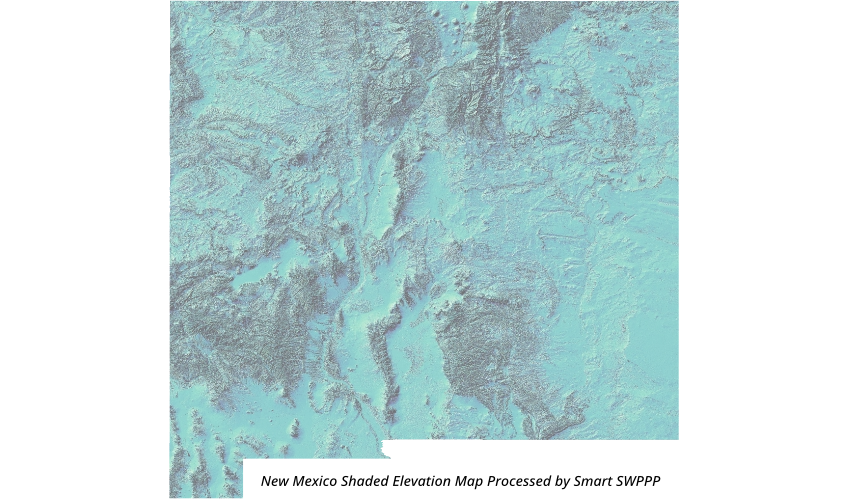New Mexico
SWPPP Services
…designed specifically for your project
Simple up front pricing
72 hour turnaround time
Custom plans for projects in New Mexico

Getting started is easy
2
Fill out the project information form and upload your plans
After submitting your order, you’ll receive an email to upload your plans
3
48 to 72 hours later, you’ll receive your SWPPP
Need it faster? Please contact us; we’re here to help you get your project started.
Stormwater Pollution Prevention Plan
For EPA CGP Projects
$799
Includes
Prepared EPA CGP Notice of Intent application
Prepared Construction Site Notices
Submittals to local City/County MS4
72 hour turnaround time
EPA Notice of Intent
Prepared permit application
$99
Ideal for
Projects that have a SWPPP but need their EPA CGP Permit
Includes
Prepared Construction Site Notices
Submittals to local City/County MS4
48 hour turnaround time
Need a custom solution for your project?
Call 1-888-363-0022
Ideal for
Developers and home builders with multiple projects
Multi-phased developments
Stormwater Pollution Prevention Plan
For EPA CGP Projects
EPA Notice of Intent
Prepared permit application
Need a custom solution for your project?
$799
$99
Call 1-888-363-0022
Includes
Prepared EPA Notice of Intent application
Ideal for
Projects that have a SWPPP but need their EPA CGP Permit
Ideal for
Developers and home builders with multiple projects
Prepared Construction Site Notices
Submittals to local MS4 regulator to start and end project
72 hour turnaround time
Includes
Prepared Construction Site Notices
Submittals to local MS4 regulator to start and end project
48 hour turnaround time
and
Multi-phased developments
Frequently Asked Questions for New Mexico
- 1. Develop a Stormwater Pollution Prevention Plan (SWPPP)
- 2. Submit your Notice of Intent through the NPDES eReporting Tool and obtain any local stormwater permits prior to starting work
- 3. Implement your SWPPP by installing the proposed erosion and sediment control plan and posting all required notices.
- 4. Conduct the required inspections and perform maintenance on any deficiency items found during the inspections.
How can Smart SWPPP help?
We offer a streamlined approach to developing your SWPPP and submitting notices within 72 hours, helping you save time and money on your project.
A Stormwater Pollution Prevention Plan, also known as a SWPPP, SWP3, or SW3P, is a site-specific document that identifies:
- – The scope of the project
- – The operator(s) responsible for implementing the Stormwater Pollution Prevention Plan
- – Potential sources of stormwater pollution at the construction site
- – The measures to be implemented to contain on-site pollutants and prevent their runoff during storms
- – in separate stages
- – in separate phases
- – in combination with other construction activities
- – plats
- – blueprints
- – marketing plans
- – contracts
- – building permits
- – public notice or hearing
- – zoning requests
It can include one operator or many operators.
Example 1: You’re planning to build a restaurant on a 0.8-acre pad site adjacent to another project actively constructing a big-box store on 7 acres within the same shopping center. In this case, because the shopping center is considered a common plan of development and the total disturbed area for the common plan of development is over an acre, each operator would fall under the requirements associated with disturbing 1 or more acres.
Example 2: In this case, the total area that would be disturbed is 1.3 acres. As a result, each operator would fall under the requirements associated with disturbing 1 or more acres. This includes your home construction project on 0.5 acres, the other company’s home construction on 0.3 acres, and the contractor’s excavation for underground utilities on another 0.5 acres in the next phase.
“Construction” refers to actions that result in a disturbance of the land, including clearing, grading, excavating, and other similar activities.
It also includes “construction-related activities,” areas that support the construction project such as stockpiles, borrow areas, concrete truck washouts, fueling areas, material storage areas and equipment storage areas. Construction activities that do not disturb land, such as interior remodeling, generally do not require TPDES or NPDES permit coverage.